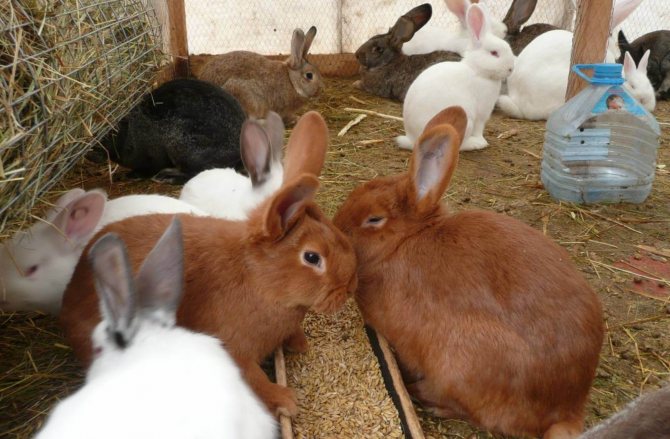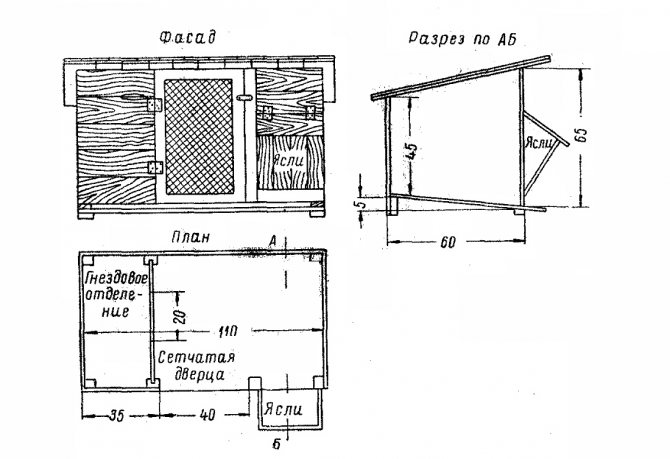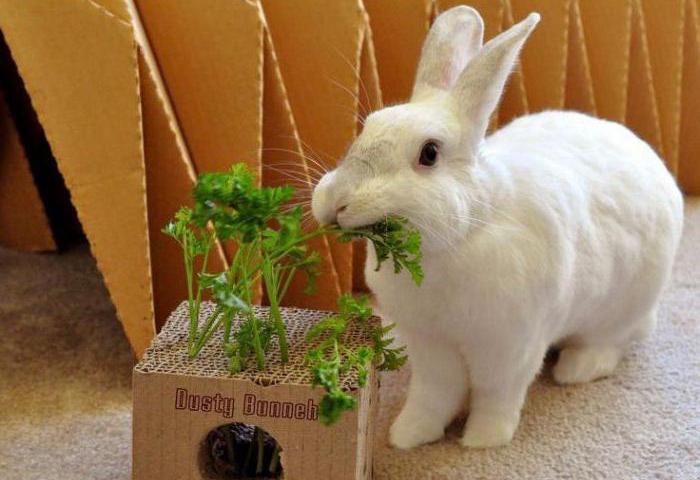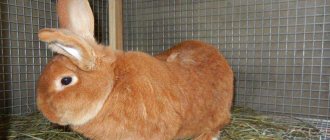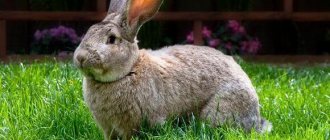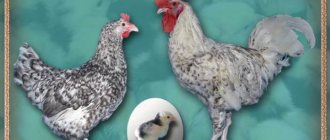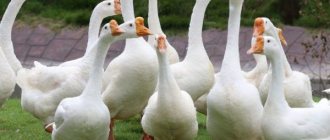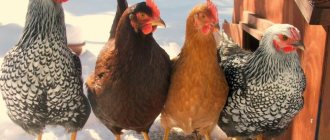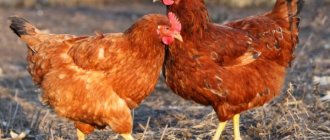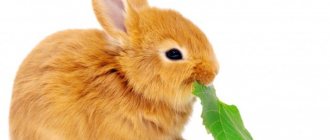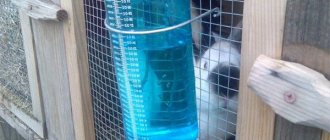Types of dwellings for rabbits
There are several options for keeping rabbits:
- individual cage;
- pit;
- common aviary;
- free range.
Animals are uncomfortable in cages, since they cannot move a lot, cannot stretch out, hide. They can get obesity, nervous tics, can get a violation of the development of the skeleton and internal organs. From the boredom of a confined space, they constantly itch, gnaw a cage or eat.
Earlier in the villages, rabbit breeding was treated as pampering, children did it for their own pleasure. The adults did not participate in this, taking care of the larger livestock.
Video - Film about rabbits
What is a rabbit enclosure
The rabbit enclosure has the following characteristics:
- Usually, to keep up to 30 rabbits, it is necessary to enclose 20 square meters of open space, located on a small elevation, so that moisture does not accumulate.
- The fence can be either wooden or made of mesh materials.
- The ceiling height should be at least one and a half meters, as rabbits can jump very high.
- Walls should be dug deeper into the ground to avoid undermining and escape of the wards.
- The floor of the aviary remains earthen, it is more usual for animals, they will be able to dig holes, as in the wild, and also feast on fresh growing grass. If it is impossible to leave the floor earthen, it must be carefully insulated with hay or sawdust in sufficient quantity so that animals can burrow there in case of cold weather.
- Some part of the enclosure should have a roof to shelter from precipitation, you can also build houses where rabbits can take refuge in bad weather and bring offspring. For the convenience of cleaning, the roof of such a dwelling is made opening.
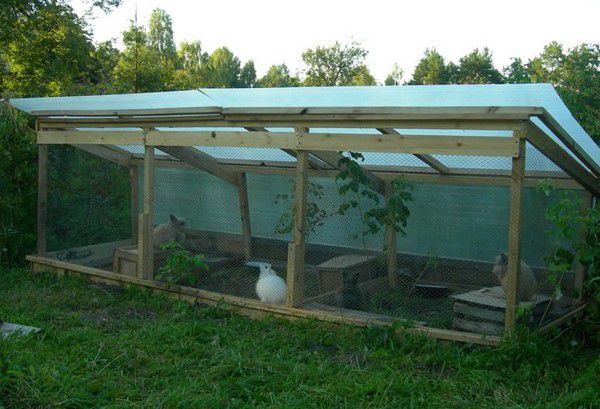
Males and females are kept separately in enclosures
“There should not be any nooks in the aviary where it will be difficult for a person to get into. Rabbits can climb somewhere, they can even die there. Therefore, it is necessary that all places are visible and accessible, so that you can easily climb there ”(rabbit breeder I. Stepanov).
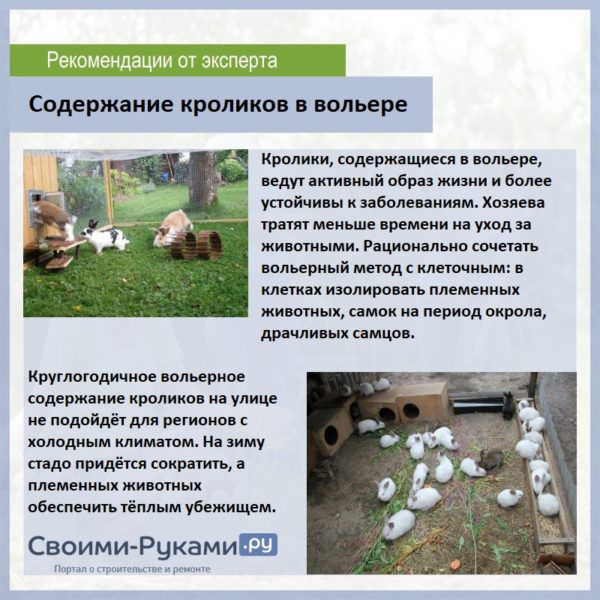

Keeping rabbits in the aviary
Assembly technology
They begin to perform work with the assembly of the shed. First, the frame of the required size is knocked down. Next, they fill the floors from boards, sheathe the shed with plywood from the inside and install partitions. Then the mineral wool and the waterproofing agent are mounted. After that, the shed is sheathed outside. Then a roof is made, also insulated with cotton wool. It is easiest to sheathe it with roofing material. Attach the roof to the back wall of the shed with hinges.
Next, they arrange the actual rabbit enclosure. The supports are installed in a trench dug around the perimeter of the aviary. Connect them with a bar along the perimeter at the bottom and top. Next, proceed to the installation of the chain-link. It is easiest to fasten it to wooden posts with nails (bending them with a loop). After the fence is ready, the trench is covered with earth or rubble. At the next stage, a bar is attached to the frame strapping under the upper chain-link.
Keeping rabbits in an aviary: pros and cons
Pros:
- conditions more close to natural, this has a positive effect on the appetite and mood of rabbits;
- they also reproduce willingly in these conditions;
- when kept in open-air cages, animals almost do not get sick;
- it is economical.Less building materials are needed for construction than for individual cells. And building an aviary is simple and takes a little time, you can do it in half a day;
- space is saved. Many animals can live in one enclosure. If you make a personal cage for each of them, then you will need many times more square meters;
- You can feed and drink all the animals at one time by pouring it into a common feeder and pouring water into one large drinking bowl. Also, when kept in an aviary in the summer, rabbits can eat grass that grows on the territory of the aviary;
- ease of care: it is necessary to clean the aviary less often than the cages. It is possible to make such an aviary at a summer cottage, caring for rabbits only on weekends;
- if you use sawdust for bedding, then you get a good fertilizer;
- protection from attack by rats or other predatory animals. The rabbit family will be able to fight back and protect their offspring in a crowd.
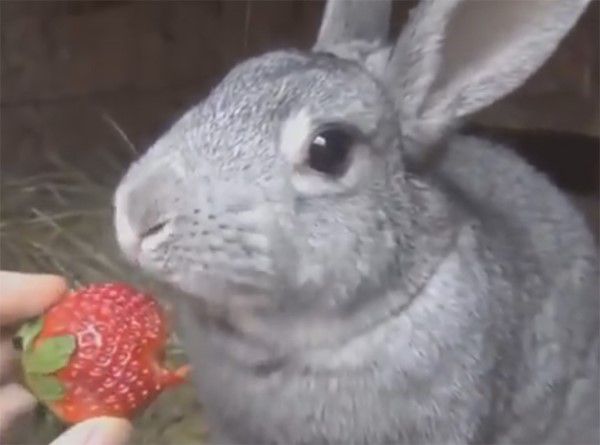

There are many advantages to keeping rabbits in an aviary.
Minuses:
- the seasonality of such content. For the winter, all livestock will have to be either slaughtered or moved to a warmer room;
- vulnerability to infections. If one of the herd gets sick, all the rabbits are more likely to die;
- this content is not suitable for large meat rabbits, because implies physical activity. The rabbits kept in tight cages are fatter and have more tender meat due to the underdevelopment of the muscles;
- different rabbits can bring offspring in one place, and later rabbits may die;
- a rabbit accustomed to an aviary can also die if it is transplanted into a cage.
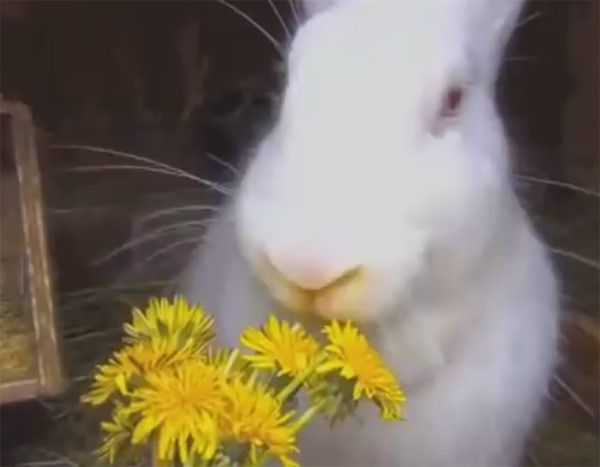

Weigh all the cons before making a decision
Location
The presence of fur allows rabbits to tolerate low temperatures, which greatly facilitates their maintenance at any time of the year. Depending on the period when the rabbits are planned to be kept, you can choose 2 types of accommodation for the animals:
Outdoor content in an open cage is suitable only for the warm season: spring, summer and autumn. In winter, the rabbits on the street will die, so they need to be moved to an insulated room. For example, in a barn. Yes, rabbits have fur, but in cold weather they still run the risk of catching a cold or frostbite ears. The shed must first be checked for cracks and gaps, eliminate them and insulate. The floor is made on a dais, it is covered with boards, and a thick layer of straw is poured on top. If the temperature in the barn drops too much, additional heating must be provided.
It is necessary to create good ventilation in the barn and ensure that the sun's rays enter without compromising thermal insulation.
Aviary construction
First of all, you need to make sure that the aviary is spacious and light. It is recommended to leave the floor earthen.
Required building materials:
- Support pillars. They can be made of metal, wood or plastic. Their main quality is high strength. The part of the support that you subsequently dig into the ground needs to be treated against rotting or corrosion.
- Grid. There can be a chain-link or plastic, wooden or metal rods are possible. But it is necessary to take into account the size of the holes in the mesh so that the rabbits cannot get out through them.
- Boards or professional sheet for a canopy.
- Wooden houses or boxes with opening top and entrance for rabbits. When kept in winter, they need to be insulated with sawdust, rags or foam.
- Shovel.
- Fasteners suitable for the selected materials (nails, screws).
- Fastening tools (hammer, saw).
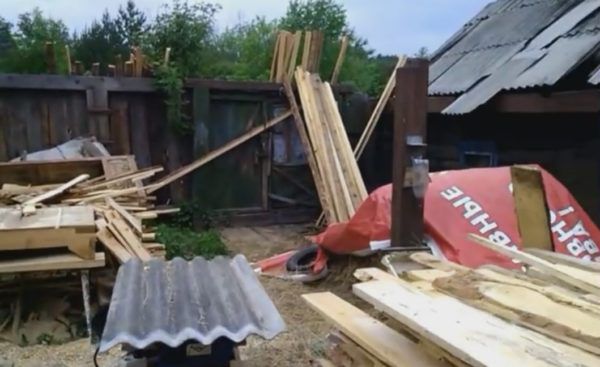

A lot of building materials are needed for an aviary
Seat selection:
- The main quality of the chosen place is the elevation, or the slope to exclude flooding of the enclosure.
- The second important quality is the availability of the necessary free space for comfortable walking of animals.The measurement is made at the rate of 1-1.5 m per adult.
- Absence of enclosures with birds or other animals nearby.
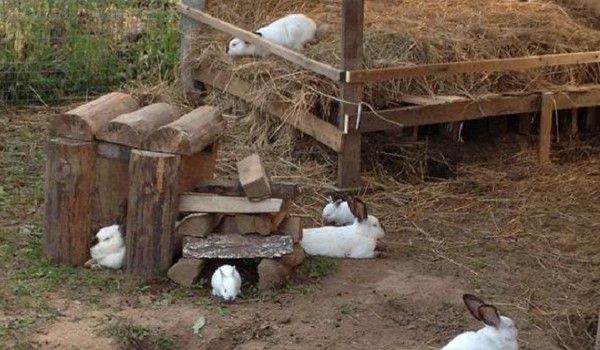

The aviary should have a canopy that protects from precipitation
An interesting fact. The only country where rabbit breeding is not only discouraged, but also punishable by a fine is Australia. There, these cute animals cause multimillion-dollar damage to agriculture.
Instructions for building an aviary with your own hands
Step 1
The first step is to install the aviary supports. At a place chosen in advance, fence about 20 meters under the aviary.
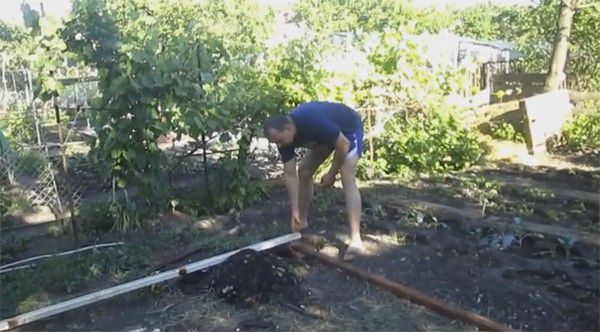

Install supports
Step 2
Dig holes for the supports, fill the bottom with a small amount of rubble.
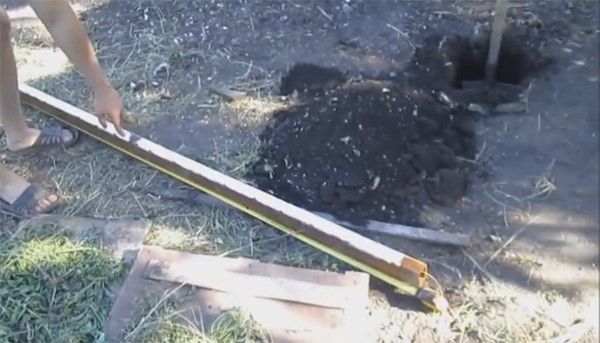

Dig holes
Step 3
The end of the support, which will be in the ground, must be treated against corrosion or decay.
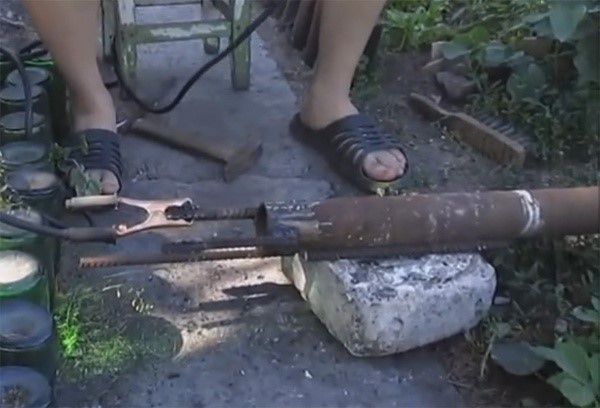

Process the end of the support
Step 4
After installing the supports in the prepared recesses, fill them with soil or fill them with pre-prepared concrete.
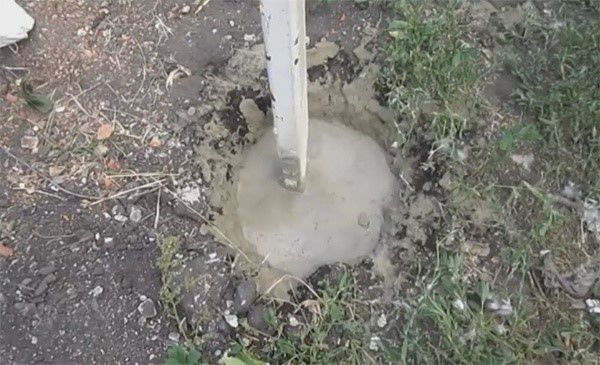

Concrete poured support
Step 5
From support to support, a trench is dug for the walls of the aviary, deep enough so that the rabbits do not dig.
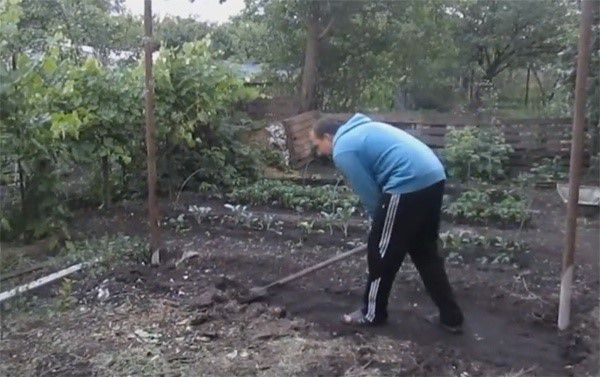

Dig a trench
Step 6
A mesh is pulled onto the installed supports, or wooden beams are nailed. The net or the bars must be dug into the ground so that the wards do not run away.
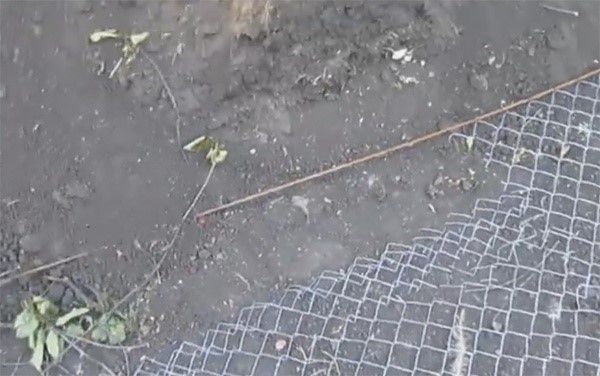

Pull the mesh over the supports
Step 7
Separately, it is covered with a net and the door to the aviary is mounted.
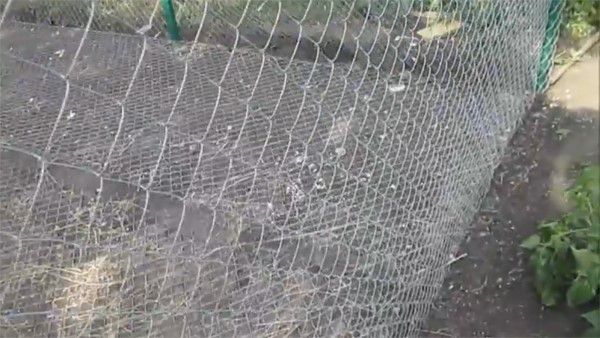

The door to the aviary also needs to be covered with a net
Step 8
A roof is made over the fenced aviary. Some are also made of mesh or beams, and some must be made covered so that the animals can hide from the weather or direct sunlight.
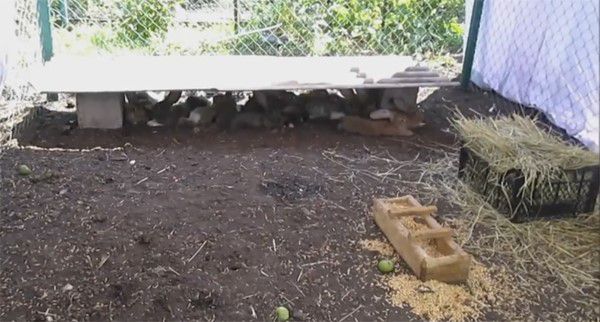

Make a roof over the aviary
Step 9
In a ready-made aviary, wooden houses or boxes are placed for raising offspring by rabbits.
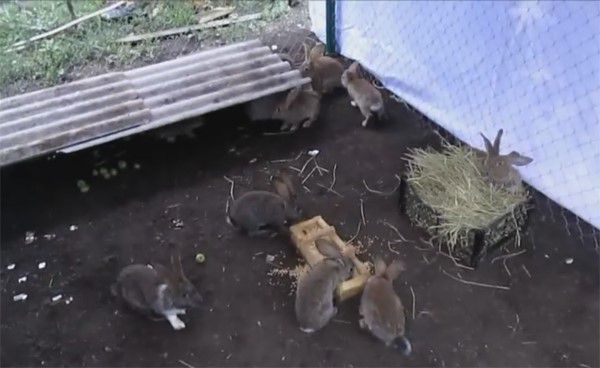

Put up bunny houses
Step 10
Also, there should be drinkers and feeders in the aviary, in an amount corresponding to the number of rabbits. They need to be secured so that active rabbits do not turn them over.
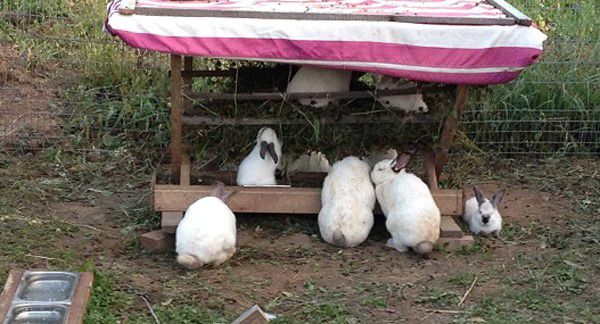

Don't forget about drinkers and feeders
Video - Rabbit enclosure
Table 1. Types of rabbit feeders
| Bowls | You can use regular dishes, but active rabbits can easily turn them over. |
| Bunker | This design of the feeder prevents the scattering of feed over the enclosure, the feed is poured there once every couple of days. |
| Gutter | Such a feeder is easy to manufacture, several rabbits can feed from it. |
| Nursery | Used for hay. |
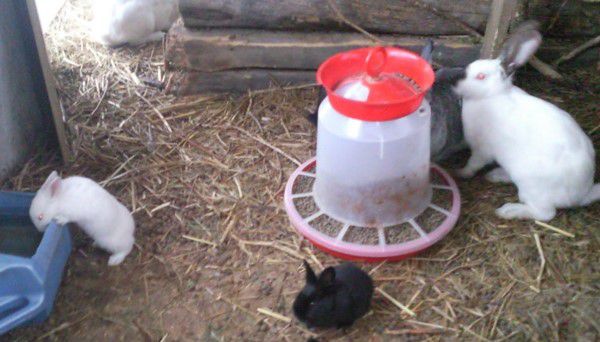

Always keep food and water fresh
It is better to make several feeding and watering places to avoid crowding.
Table 2. Types of drinkers for rabbits
| Bowls | You can use regular utensils, but just like with feeders, rabbits can turn them over, which can lead to dampness and mold in the enclosure. And the rabbits themselves will be thirsty. |
| Cup | They are made from bottles and have a fairly large volume. |
| Vacuum | Can also be made from plastic bottles. The water in these drinkers stays fresh longer. |
| Nipple | Special drinkers with a ball at the end. The rabbit drinks by pressing the ball with his tongue. The most versatile type of drinking bowls for rodents. From such a container, water does not flow out by itself, does not evaporate, the rabbit cannot turn it over. Disadvantages can only be in the winter, when the ball freezes. |
| Automatic | Drinking bowls for large farms. From a large container through pipes, water is automatically supplied to the aviary. |
Rabbits drink about 1 liter of water a day and are very squeamish, so always keep an eye on the cleanliness of the water in the drinkers!
How to build with your own hands?
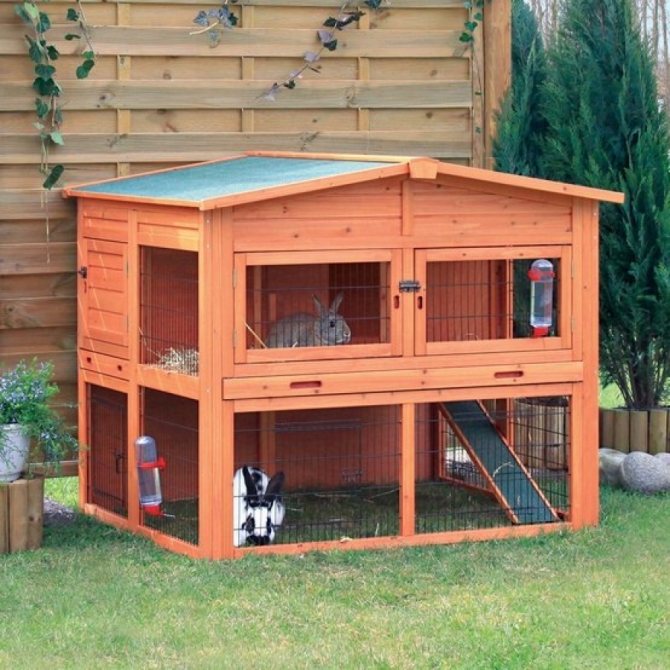

Construction requirements
Before you start building a rabbit enclosure, you need to choose a suitable place where it will be located.
The main requirement for placement is that the aviary is installed on an elevated place to avoid flooding during rains and melting snow.
In the southern regions, farmers recommend installing the aviary in the light shade of trees to protect the pets from overheating. In the northern regions, they act differently - the dwelling for rabbits is placed in the open sun.
How do I calculate the area?
Having decided on the place, you need to correctly calculate the area of \ u200b \ u200bthe structure. It is determined based on the number of livestock. On average, each rabbit should have at least 0.7 m2.
For bunnies with bunnies, more space will be needed. The optimal value is 1 m2 for each adult.
Construction Materials
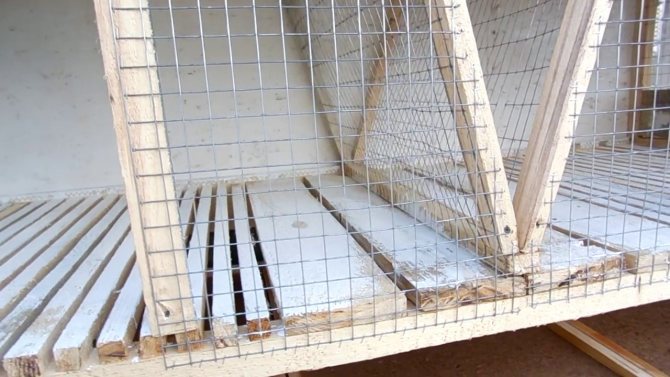

To build an aviary with your own hands, you will need building materials:
- bars;
- board;
- metal mesh;
- supports (pipes or metal pegs can be used);
- shovel;
- screws, nails;
- screwdriver;
- door hinges;
- lock;
- slate;
- sand;
- sawdust.
Attention! It is important to correctly calculate the perimeter of the enclosure in order to purchase the required amount of mesh, boards and slate. It should be noted that the side parts of the aviary are dug in to a depth of at least 0.8 m so that the rabbits cannot dig holes and run away.
Construction phase
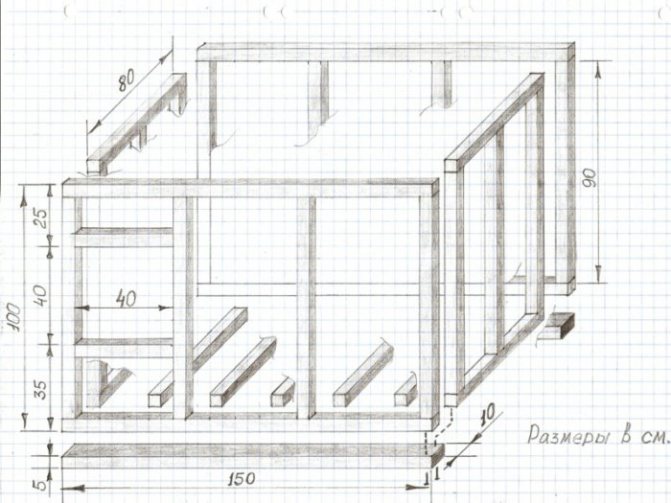

Aviary plan
Having chosen a suitable place on the site for building a rabbit enclosure, you need to take measurements and draw a markup.
At the initial stage, a ditch is dug, into which the walls of the slate structure will be deepened in the future.
Supports are dug in at the corners to a depth of 0.8 m.
Slate sheets are placed in the grooves (it is more convenient to use flat). They are fastened together. The moat is covered with earth and tamped, the site is leveled.
A mesh is attached to the metal corner supports using self-tapping screws.
The height of the walls of the structure is 1 m. It is advisable to sew up the back of the structure with a board to protect the animals from drafts. A door is installed on the front or one of the side walls.
The top layer of soil inside the enclosure must be removed to a depth of 15 cm, and sand must be poured instead.
A mesh is fixed on top of the sand layer, on which sawdust is then poured. Some farmers leave the earthen floor, others concrete it and then insulate it with bedding.
Attention! Not all breeds are capable of living on a mesh floor. Weighty rabbits and those with slightly pubescent paws will suffer from pododermatitis.
The obligatory attributes of the aviary are shelters - houses made of wood, where pets will hide when they are cold or scared, and bunnies with droppings also need such shelters. It is in them that the okrol takes place.
Optionally, you can build a small canopy over the structure, it will protect the rabbits from the hot sun, rain and snow.
Drinking bowls and feeders are installed inside the aviary. It is important to make sure that this equipment meets the needs of the entire livestock, otherwise the rabbits will fight for food and water.
Eared animals can be populated into a finished dwelling.
Arrangement of the floor in the aviary
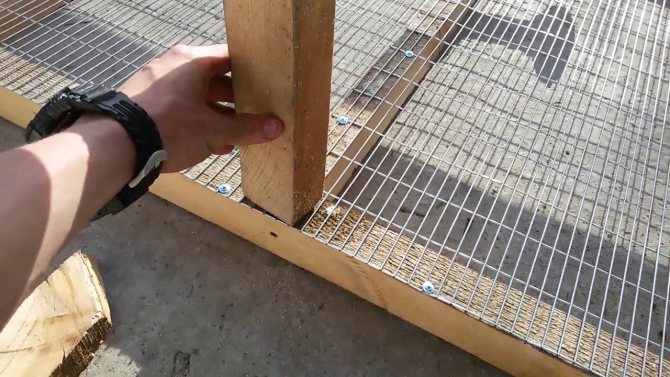

To equip the floor in the aviary correctly, you need to follow the following recommendations:
- It is advisable to lay a fine mesh type mesh on the floor to facilitate cleaning.
- Thin bars must be laid on the mesh, leaving small gaps between them.
- Planks must be laid at an angle of 45º to the cross-beams of the fence, otherwise the rabbits may injure themselves. In addition, do not forget that animals will definitely gnaw a tree.
- Before starting the construction of the aviary, in general, it is necessary to prepare a detailed drawing in which the room is divided into living areas, feed compartments and drinkers. This will make the construction process much easier.
- In specialized stores, you can purchase special plastic ladders for rabbits as a covering, which are stacked instead of bars. This will make the animals much more comfortable. In addition, cleaning them is much easier, and the process of decay is not terrible for the material, unlike wood.
The device of the open-air cage-pit
Photo of the pit:
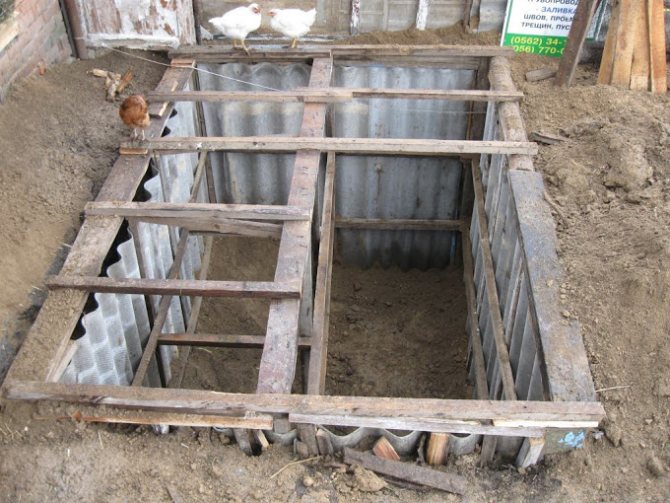

In order to build such an enclosure, it is necessary to enclose the enclosure area with a net. The slate is dug in along the perimeter of the enclosure along the net so that the rabbits do not dig out the passages.
Sheets with a height of 40-50 cm are used, since animals do not dig deeper holes.
Inside the enclosure, you need to put feeders with grain and hay, as well as nipple drinkers.
Sparrows or other birds can flock to feed, which will increase the risk of infection of animals with viral diseases.
To avoid this, close the top of the enclosure with a net. It will also keep your rabbits safe from dogs and cats.
This simple design is suitable for summer rabbits.... Females can be placed in the aviary. The males are housed in a separate area to control the breeding of the rabbits.
There will be fights among males in the first days of cohabitation. When the territory is divided and a hierarchy is established, conflicts will end.
Too much light enters the rabbit enclosures covered with a chain-link netting, which makes the animals uncomfortable.
Therefore, it is necessary to install wooden booths with an earthen floor or sheds in the aviary, which will provide shade within the open space. It is in shaded areas that rabbits will dig holes.
The fenced-in rabbit walking area has its merits and demerits.
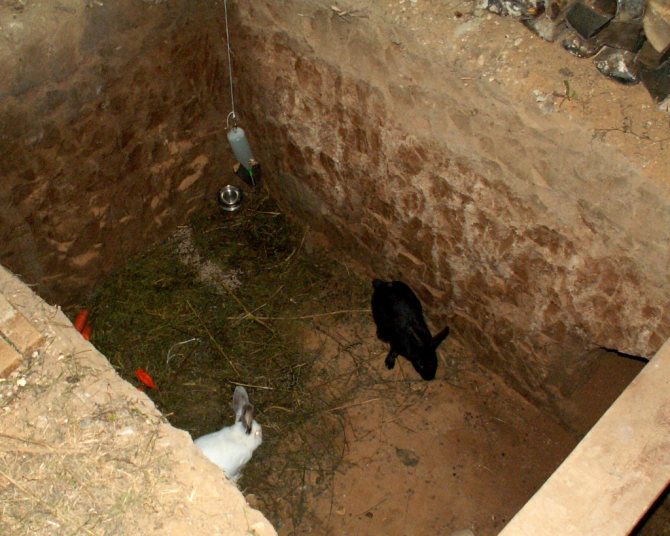

The advantages include the following features:
- it is easy to care for animals in such an aviary and monitor their health;
- fenced aviary is well suited for mating animals;
- it is easy to clean in an open walking area, since the floor remains earthen;
- in the aviary, the conditions for keeping rabbits are close to natural, the animals develop strong immunity, so they get sick less.
The disadvantages of the walking area include:
- lack of mother liquor;
- increased consumption of compound feed for animal feeding;
- slow weight gain by rabbits.
Unlike cage keeping, it is difficult to equip a mother house for rabbits in a fenced walking area.
Without a separate queen cell, adults can gnaw off the offspring, which makes it difficult to breed rabbits in an aviary.
Using only hay and grain to feed your rabbits will not give you good weight gain.
Giant rabbits, for example, the "Gray Giant" breed, need to be fattened for meat for at least 6 months using expensive compound feed.
Otherwise, the rabbits will not gain weight. Therefore, keeping rabbits in an enclosure with a fenced walking area is unprofitable.
Such an aviary is more suitable for keeping downy breeds of a rabbit.
This is how a house for a bunk rabbit enclosure may look like. Schematic representation of an open-air cage for keeping rabbits in winter.
Aviary hygiene
Aviary care:
- Timely hygiene is the prevention of most diseases in rabbits. It is necessary to do weekly cleaning in the aviary, removing waste products and treating with special veterinary agents that prevent the growth of bacteria.
- Make sure that the hay and sawdust in the aviary is always fresh, do not rot.
- Change the water in the drinkers regularly, make sure that it is always in the required amount.
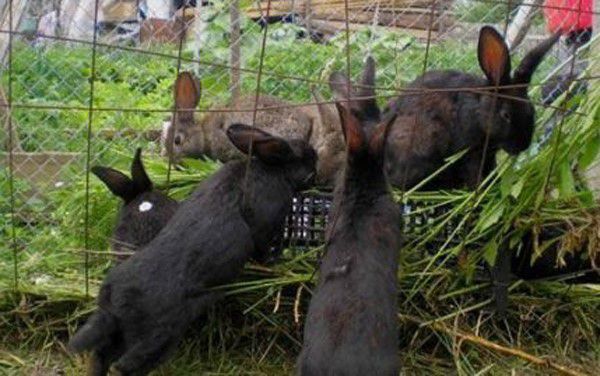

Carry out timely hygiene of the aviary
When buying your first rabbits, it is better to ask an experienced rabbit breeder for help in choosing. The seller must have a veterinary certificate.
Output
This is how the rabbit enclosure is assembled. Keeping, growing and breeding these animals in such a walk will certainly be successful. Indeed, in an aviary, rabbits usually feel much more comfortable than in cages. And therefore, they grow and develop much better.If the owner of the backyard plots carefully when choosing a feed supplier, his animals, among other things, will never become infected with any infectious disease.
Breeding rabbits in an aviary
If you are going to breed rabbits in an aviary, then you should adhere to the following recommendations:
- when the aviary is ready, it is necessary to populate it correctly. All rabbits are launched there at once, subsequently they will be replenished with rabbits born there;
- but it is better not to add strangers to an already formed family - they will not accept it;
- with the exception of females, which are kept separately from males, sitting down to them only for the purpose of breeding. Males are not attached to females;
- a day after mating, a "control" mating is carried out so that the rabbit becomes pregnant for sure;
- when the goal is achieved, the males settle again separately. Rabbits raise offspring up to three to four months, after which new males are released from the offspring and also shed;
- the rabbits kept together are benevolent to their own and others' offspring, if it smells "familiar", the females can feed all the rabbits of the herd;
- male rabbits need to be removed and in order to prevent a double pregnancy of the rabbit, their body is so arranged that this is possible, but such offspring will be smaller and less viable;
- for reproduction, rabbits need queen cells - artificial burrows that can be replaced with boxes or special houses with an opening roof;
- mating should not be allowed between blood related rabbits (dad-mom-son-daughter-brother-sister), the offspring may be unhealthy;
- if you are breeding rabbits for sale, cross only one breed of the same color, variegated animals are not considered purebred.
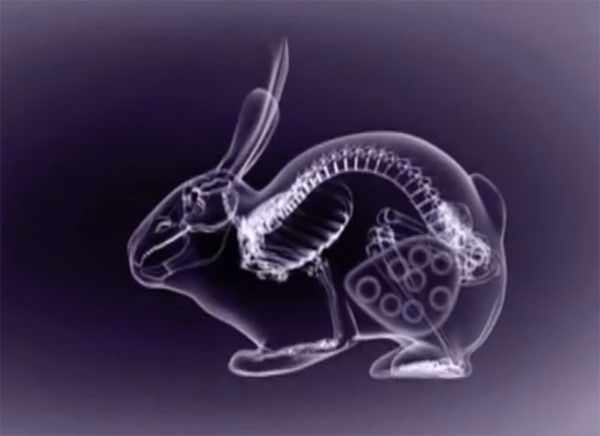

A rabbit can bring 6-14 young rabbits at a time
Do not place the rabbit enclosure next to poultry. They can contract a common infection and die all at once.
Breeding readiness:
Large breeds - 8 months female, 9 months male.
Medium breeds - 6 months female, 7 months male.
Small breeds - 5 months female, 6 months male.
The gestation period lasts about a month. The bunny can bring healthy bunnies up to three to four years.
You can read more useful information about breeding rabbits in our article. - here.
Rabbits for breeding
There are different types of rabbits to breed:
- meat;
- meat-skin;
- skinny;
- downy;
- decorative.
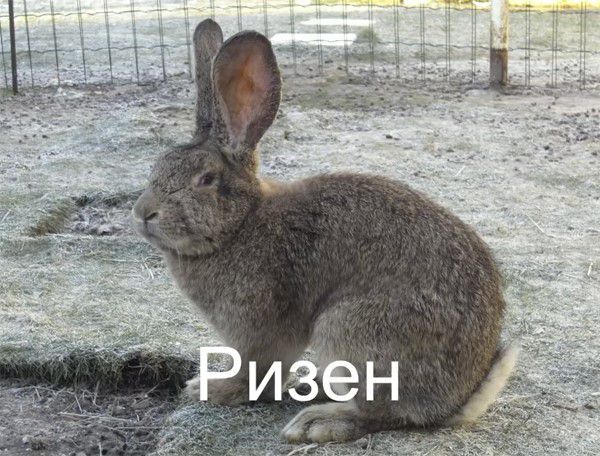

Risen are well suited for breeding
In total, experts have about 200 individual breeds that are well suited for breeding.
Features and rules of maintenance and care
In order for rabbits to grow healthy and reproduce well, you need to adhere to the following rules for caring for them:
- The key to the health and good mood of an animal is air, movement, sun and good food.
- To meet the need for food and water, feeders and drinkers are placed in the aviaries, in the amount necessary for the entire family to prevent fights.
- Drinking bowls should be placed in different corners of the enclosure so that the animals do not crowd around them, but can drink freely.
- The diet is based on fresh grass in summer and hay in winter.
- To sharpen their teeth, rabbits need tree branches, for example, pine, willow, aspen, poplar, apple, linden, maple, birch, spruce, juniper.
- The cramped enclosures are vulnerable to massive animal diseases. Should one get sick, and all may die.
- For the prevention of infections, it is better to vaccinate all the livestock of rabbits.
- Use special disinfectants to disinfect the aviary, feeders and drinkers.
- During pregnancy, the rabbit needs special care and enhanced nutrition, rich in vitamins and minerals.
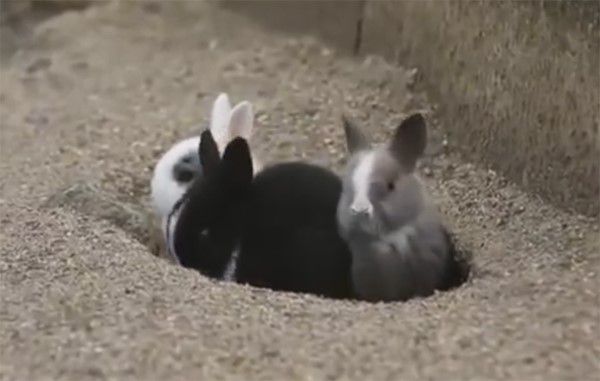

Healthy rabbits breed well with good care

